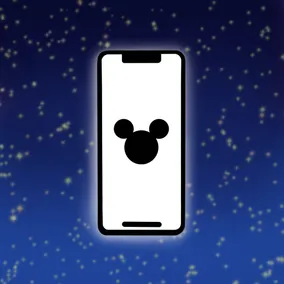How to Apply Disney Magic to Your Digital Product

Danielle Johnson, Former Product Designer
Article Categories:
Posted on
What's Guestology and how can it help design apps?
I was extremely scared of characters in big costumes as a child. I was particularly scared of their faces because they strangely didn’t move. But at seven years old everything changed when my mother took me to Disney World. I walked through Magic Kingdom's entrance and for the first time I became so engrossed in the environment that I didn't even think about the still-faced characters. No longer afraid, I waited in every long line I saw to meet Mickey and the gang. My mom still has two full books of autographs.
The Walt Disney Company managed to surprise and delight me enough to make all of my fears go away. I walked through the exact journey they designed for me and everyone else that visited the park. So what was Disney’s magic? Disney has been delivering the most immersive experiences for decades through what they call Guestology. In the Disney Institute’s book “Be Our Guest” they outline the steps that they take to entice their guests.
The term Guestology means the art and science of knowing your customer (always referred to as “guests” by Disney) and understanding their needs. Bruce Laval coined the term as an industrial engineer at the Walt Disney Company. He urged his colleagues to consider the guest's point of view because exceeding expectations can create lifelong customers and higher revenue. Anyone who calls themselves a “user-centered designer” or even a “user experience designer” would appreciate the Guestology approach because it puts the user at the forefront of all decisions and designs.
In this article, I dive into the secret sauce behind Disney’s magic making and apply their approach to app development. I discuss:
- Learning Your Target Audience
- Determining Your Cast, Setting, and Process
- Identifying your Quality Standards
Learning Your Target Audience
The first step in Guestology is learning your target audience. Who are they and what do they expect from your company? You must learn the audience’s demographics by determining their customer segmentation and their psychographics by understanding what they anticipate when they interact with your brand. For instance, although their demographics may be the same, someone using the UberEats app would have completely different expectations than someone using the Uber app. Even though the UI and branding of the two apps are similar, they use different tactics to appease the two different audiences.
Determining Your Cast, Setting, and Process
Once you know your audience, it’s time to explore what Disney calls “Delivery Systems”. These systems are methods by which experiences are delivered to guests. Every company has 3 common Delivery Systems: Cast, Setting, and Process.
The Cast is who interacts with your guests. More commonly, the Cast is made up of employees, but the Cast can also be distilled into a website or app. This is where you build those hyper-intentional customer-facing interactions, like:
- What’s the tone of your website’s copy?
- Are the headings and buttons clear and concise?
- Is your site’s microcopy making the experience more personable?
In regards to tone, something as simple as always saying “My pleasure” instead of “Thank you” has been known to leave a lasting impression.
Next, the Setting must be thoroughly developed. Where are your guests meeting you? At Disney, this looks like carefully picking out cobblestones for different areas of the park. In an app it might look like purposeful UI, not just aesthetically pleasing design. The Setting should be calculated carefully so that everything included has a clear intention and doesn’t take away from the overall experience. User journeys and site maps have always proved to help build a proper setting.
Lastly, your brand’s Process will define what highs and lows the guests will experience in a physical or digital journey. By thinking out a guest’s process, we can identify places in the journey where they are likely to encounter pain points. Simple hiccups such as long lines or confusing cart pages can be designed better by thinking through these journeys.
The third step in the Guestology practice is creating your brand’s quality standards. The Disney Institute defines quality standards as the things that ensure consistent delivery of a common purpose. On this step, it’s crucial to decide what your brand’s common purpose and core ideologies are because the standards will serve as guidance and inspiration for operations. Therefore, this step is less about apps and products and more about the brand itself. Once the brand guidelines and attributes are clearly defined, it should be easy to identify the quality standards that will influence digital design. For example, a hair salon’s quality standards may include relaxation so the app would strive to have a calming color palette and easy navigation to avoid stress when booking.
Once the Delivery Systems and quality standards are thoroughly defined, it’s time to unify them. Consider how each of your Quality standards could be driven by the Delivery Systems. In Disney’s case, efficiency can be elevated through setting by having interesting and lengthy waiting areas for rides so guests can wait in an orderly fashion while also being entertained.
Guestology is helpful in building thoughtful physical and digital spaces for any brand’s guests. It not only keeps customers at the forefront of the decisions, it champions a brand’s principles as well. This process also gives designers and stakeholders a way to troubleshoot potential problems before they even happen. Although Guestology is a foreign term to many people, experience designers have used the same principles for years by conducting user research and creating journeys. By adding a little pixie dust to common experience design practices, Guestology could have a huge impact on everything from a website’s user flow to conquering fears of still-faced costumes.